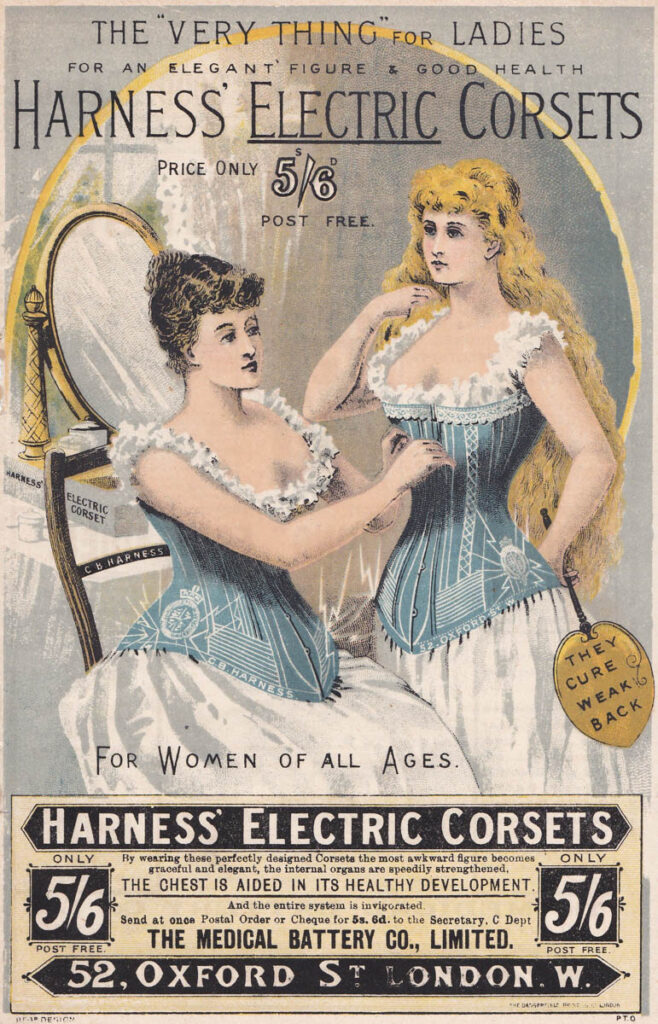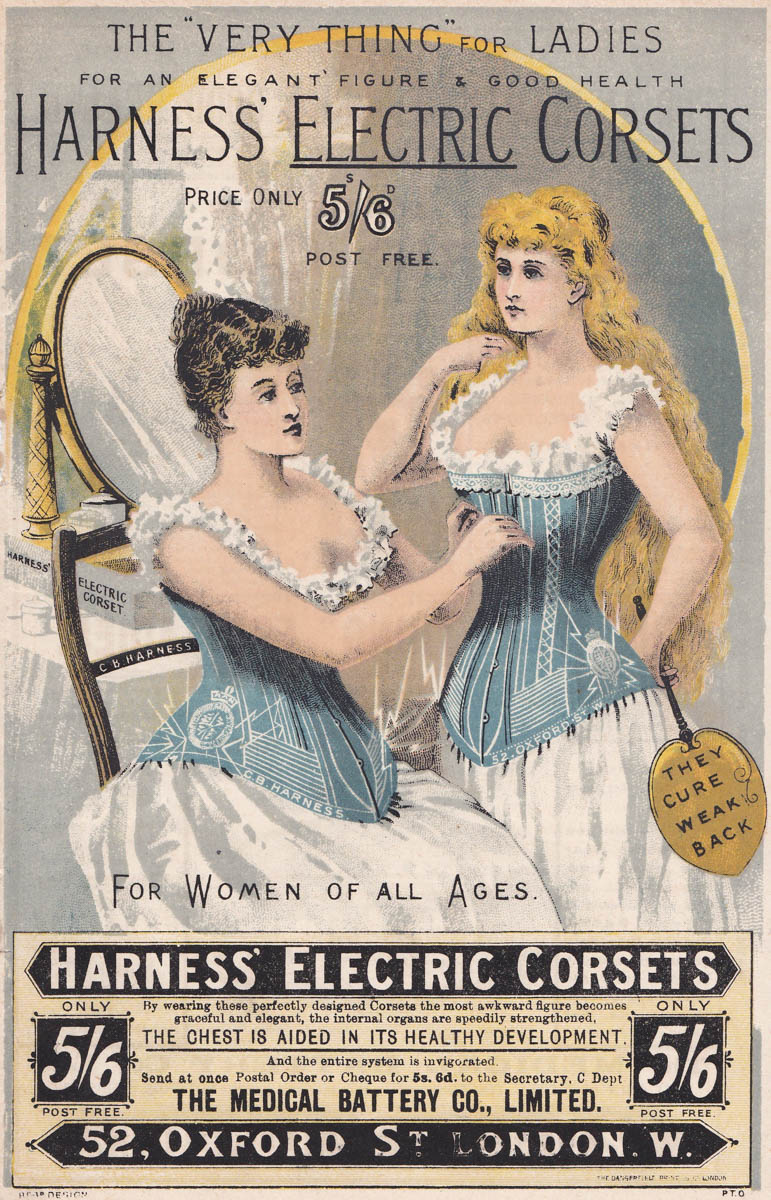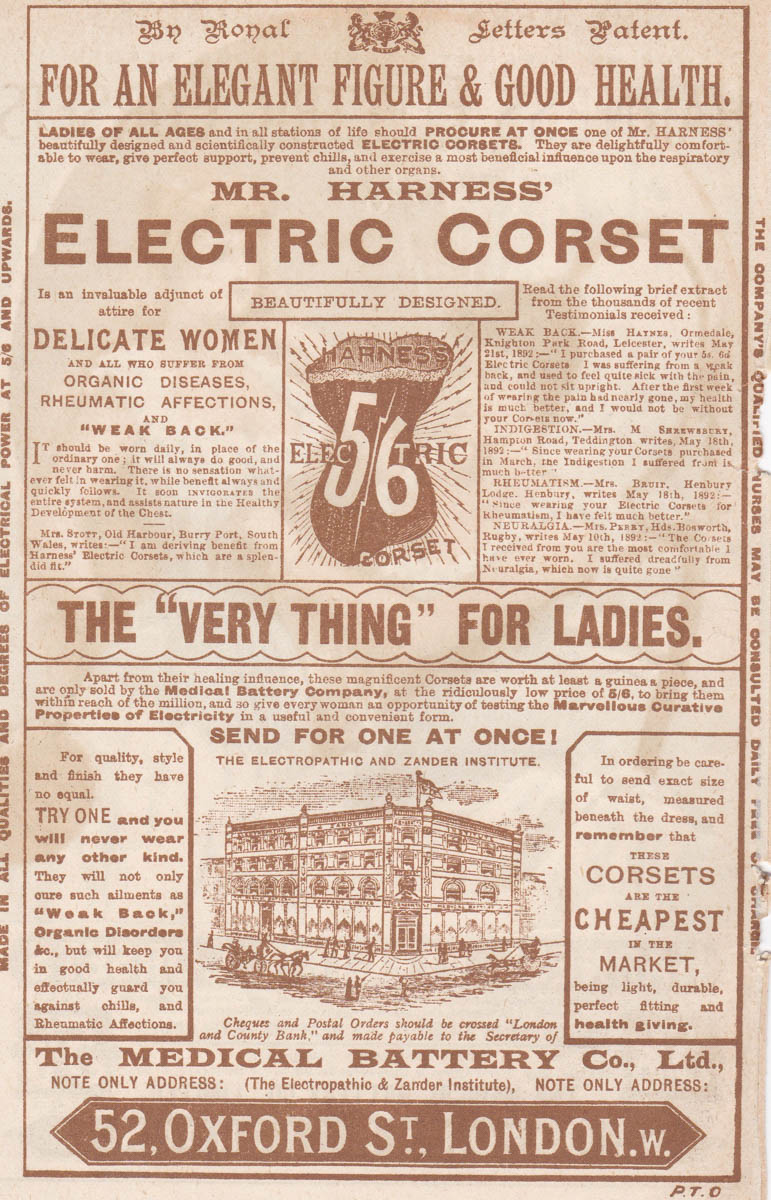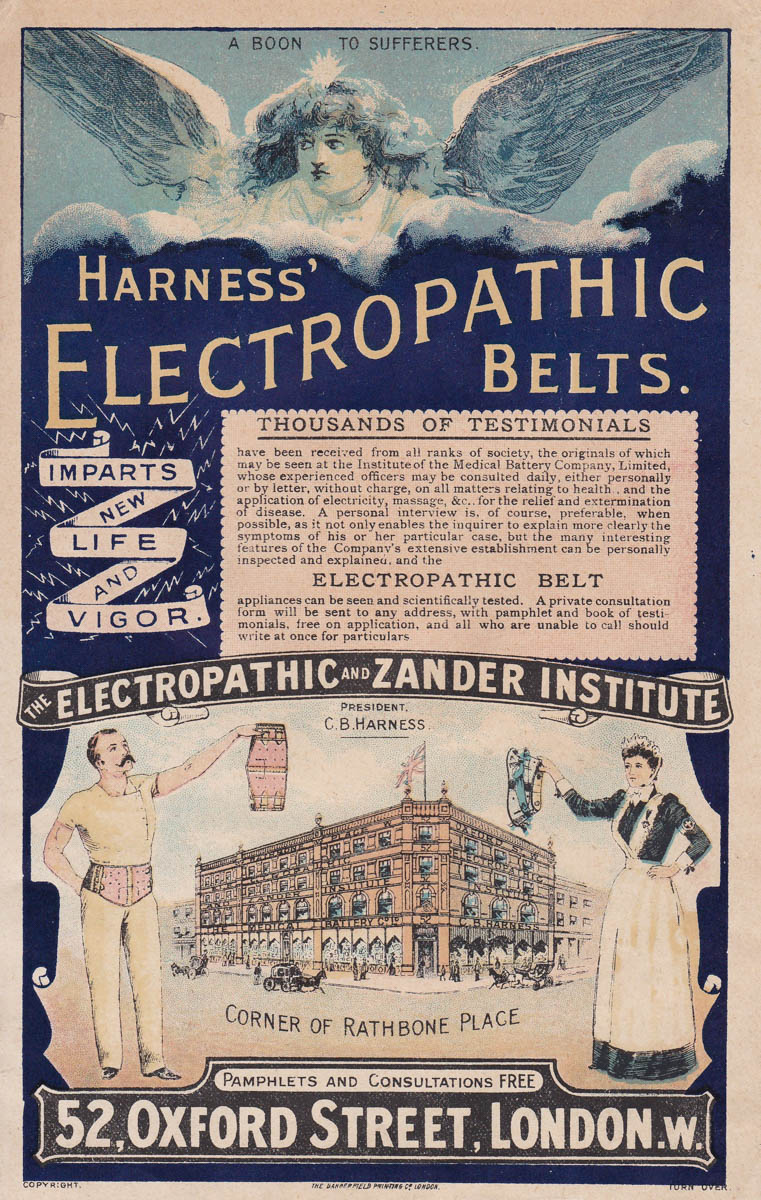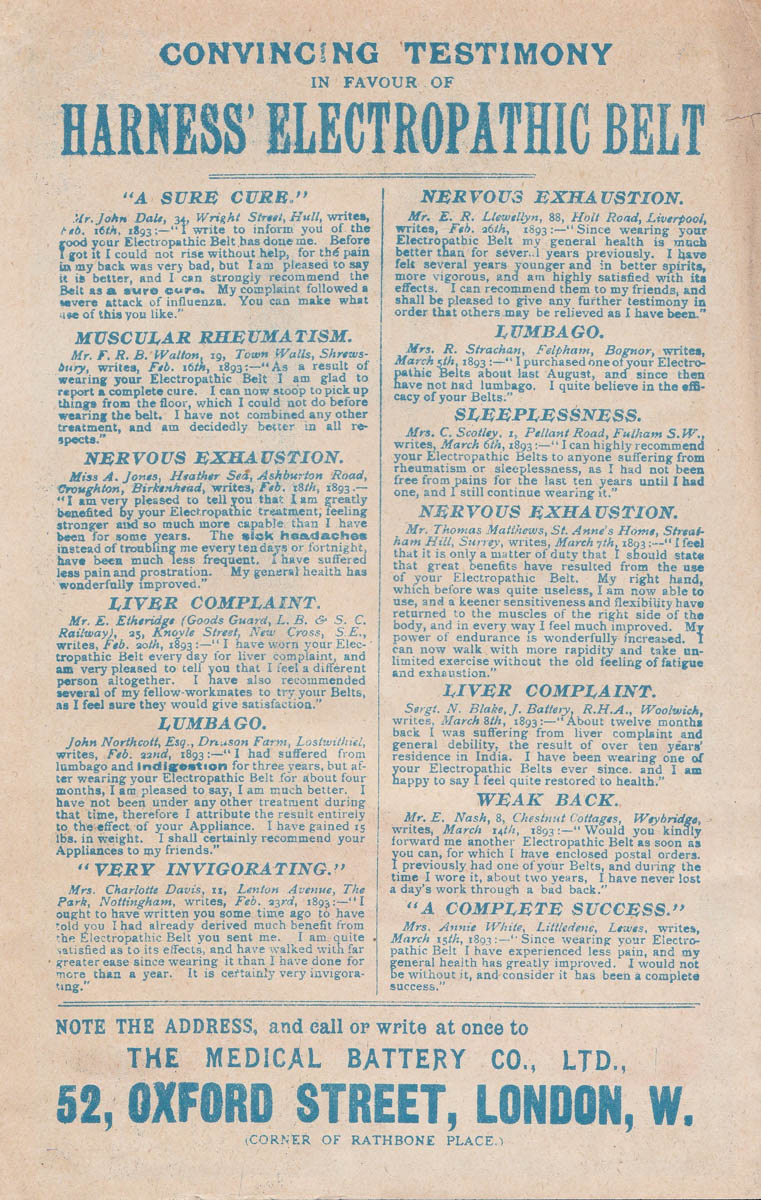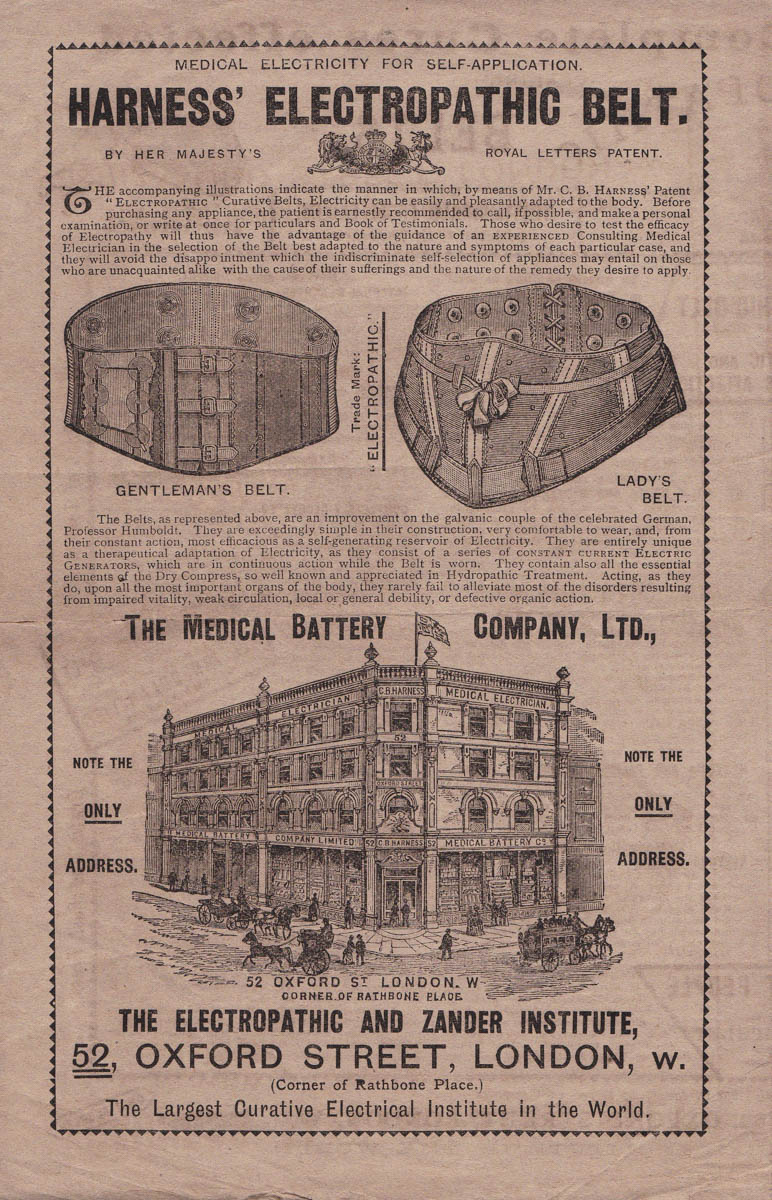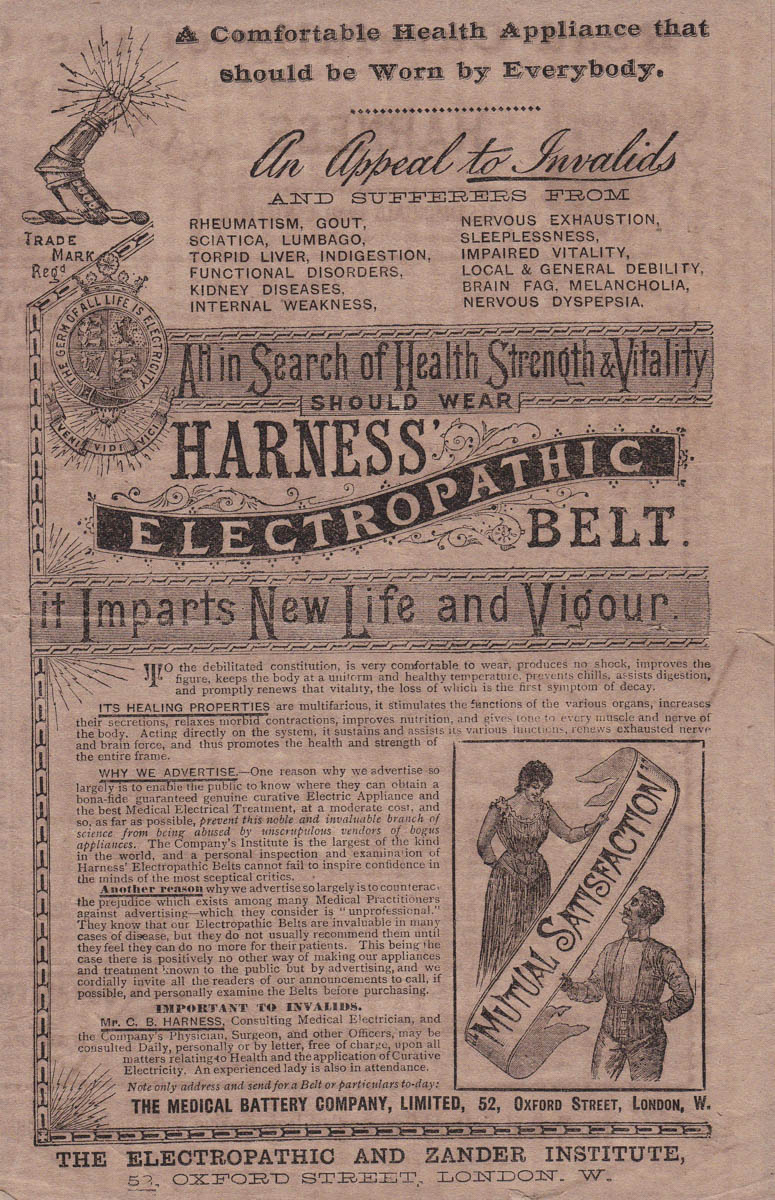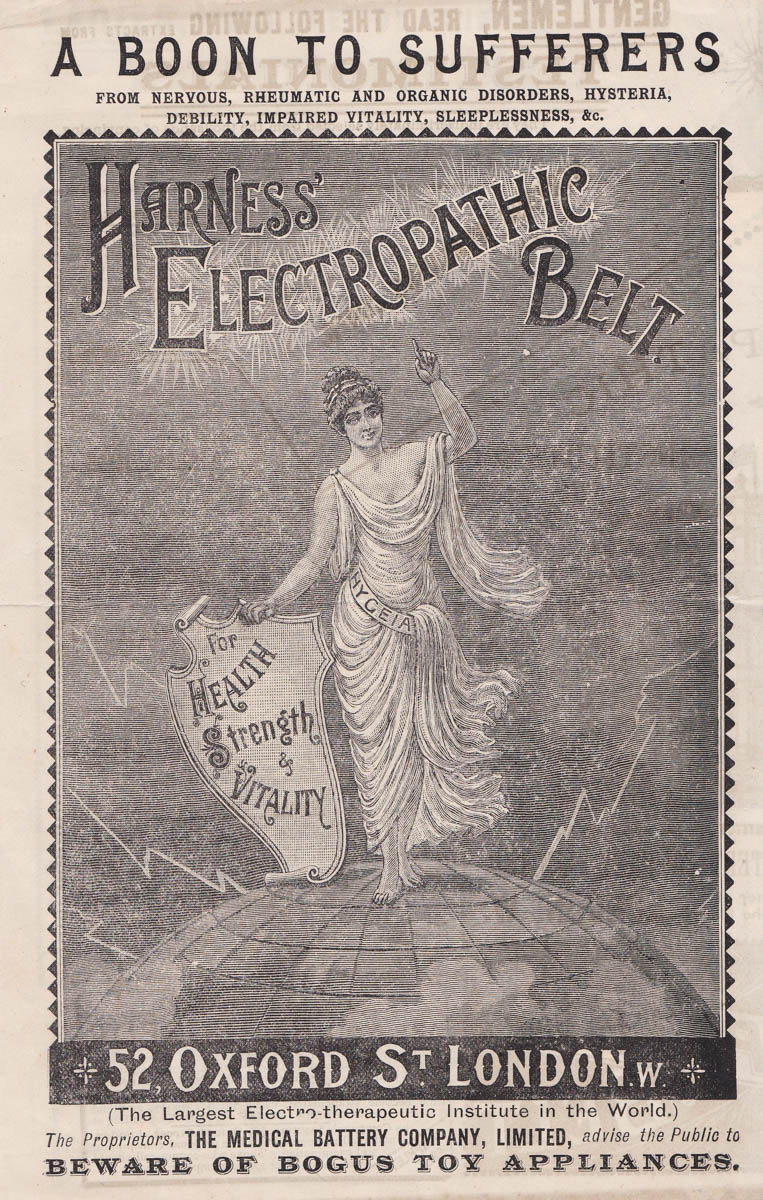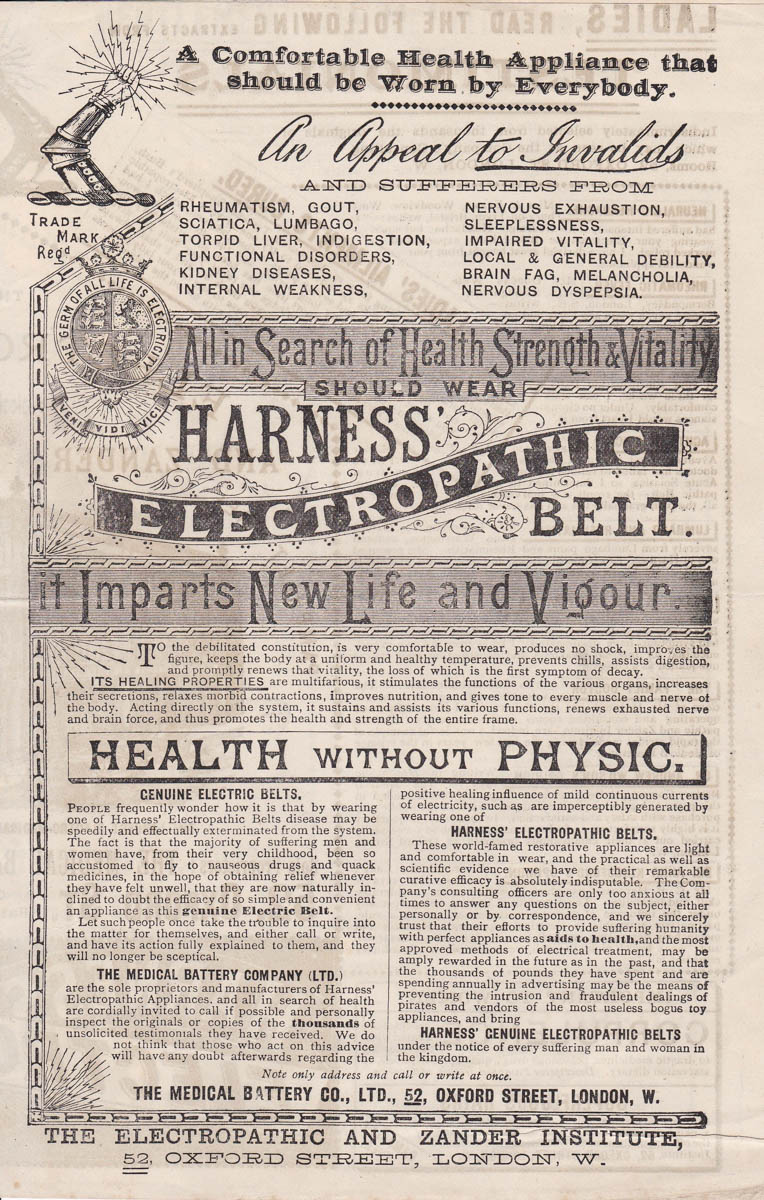Date: c. 1880s
Origin: Great Britain
Brand: Harness
The Edison Electric Light Company (later the General Electric Company) was established in 1878 by American inventor Thomas Edison and his investors. In 1882, the company opened the Edison Electric Light Station in London, the world’s first coal-fired power station generating electricity for public use, and the Pearl Street Station in New York City, the first commercial central power plant in the United States.
The marvel of electric power in the late nineteenth century was transformative of European and American society. Almost contemporaneously, the pseudo-science of ‘Electropathy’ emerged. This refers to the belief that ‘medical electricity’ had many therapeutic effects on the living body and could cure ‘almost all diseases.’
Among these believers in ‘electro-therapeutics’ was Mr. C. B. Harness, who was the managing director of the Medical Battery Company in London and considered ‘the renowned consulting medical electrician.’ An 1886 issue of St. Stephen’s Review reported that the electric corset was amongst one of Harness’ ‘latest developments in curative electricity.’
These promotional materials show several models of electric corsets and electropathic belts for sale at 52 Oxford Street in London. In these, the company bragged of ‘thousands’ of testimonials for these ‘scientifically tested’ inventions, including claims that they have treated or cured muscular rheumatism, nervous exhaustion, lumbago, liver complaints, and sleeplessness.
While the electric corsets were created exclusively for ladies, Harness’ electropathic ‘curative’ belts were designed for both women and men. Described as a ‘self-generating reservoir of Electricity,’ they were claimed to contain a ‘series of constant current Electric generators’ that would be in ‘continuous action while the Belt is worn.’ However, Harness’ Gentleman’s Belt received a negative review by a Dr. William Langran, who wrote to The Electrical Review in 1888:
‘I have carefully tested Mr. Harness’s “electropathic” belt which you kindly lent me. Its supposed virtue consists in a number of discs of copper and zinc, the circuit of which, so far as I can make out, is incomplete. On placing the belt in contact with the skin, it failed to give the slightest indication of a current, on connecting it with a most sensitive telephone receiver … It is a well-known fact that a sufficient current of electricity to overcome the resistance of the skin cannot be generated by a few copper and zinc discs. These belts give a mechanical support, and therefore cause a highly imaginative portion of the public to believe in their efficacy as curative agents.’
Today, Mr. Harness’ Electric Corsets and those of his competitor, Dr. Scott, are remembered as oddities of Victorian society. They have been mentioned in many publications, including the recently-published The Electric Corset and Other Victorian Miracles: Medical Devices and Treatments from the Golden Age of Quackery by Jeremy Agnew and Pseudo-Science and Society in 19th-Century America by Arthur Wrobel.
Many thanks to Summer Anne Lee for the object description and research.
From the collection of The Underpinnings Museum
